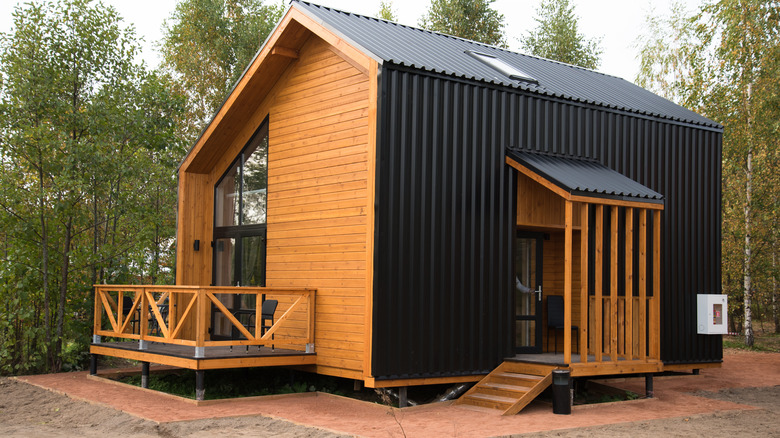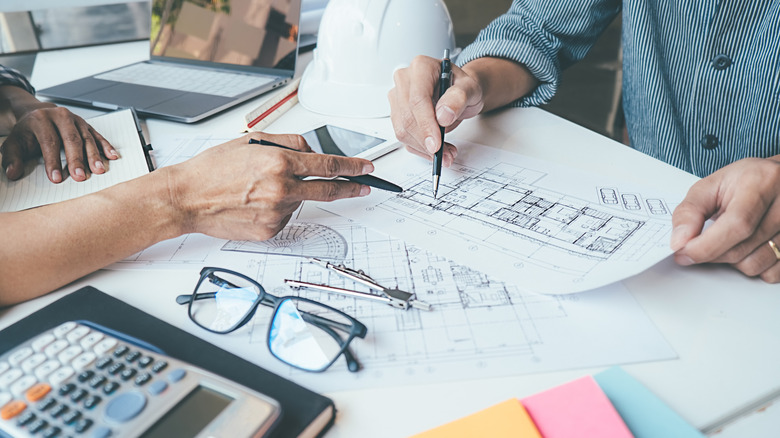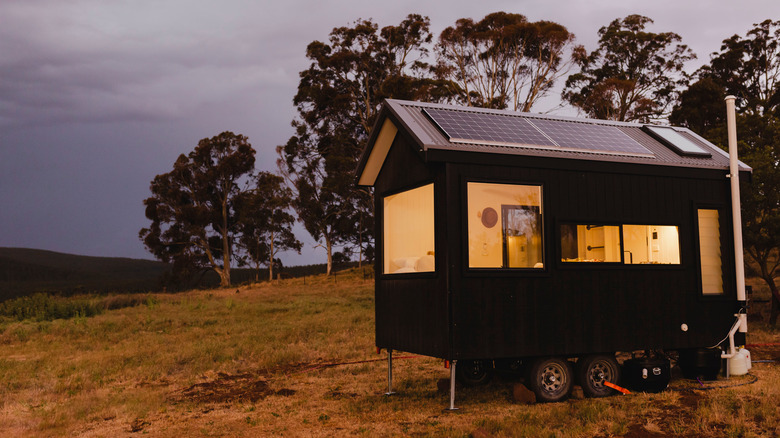How Much Will Living In A Tiny House Really Cost You?
With rising inflation and an ever-increasing cost of living, you may be considering making a bit of a change in your life, possibly downsizing to a smaller home. Tiny houses, defined as homes with less than 400 square feet of living space, according to the International Residential Code, are only becoming more popular for a variety of reasons. These smaller houses have less of an impact on the environment, they are sometimes more mobile than regular houses (if they're built on trailers), and they encourage a more simplified and minimalist vibe towards life with less of a focus on material possessions.
But one of the biggest drivers motivating people to consider these smaller homes is the idea that it costs less to build or purchase a tiny home than what they would spend on a traditional-sized home. However, this is a concept that, in some cases, may be simply untrue. As Reader's Digest explains, embarking on a tiny house journey can come with a wealth of hidden costs, some of which may add up to more than you'd expect.
Hidden costs of building a tiny house
One of the most appealing aspects about tiny houses is the prospect of building one from scratch, as opposed to purchasing a home that has already been customized. Building your own home allows for many more individual preferences in materials and design. But, according to Reader's Digest, building a tiny home may not save you a ton of dollars relative to building a regular-sized home. First, because everything in your tiny house is, by definition, smaller, you will use significantly fewer building materials. While you may think this aspect will save you money, in actuality, materials cost savings often come in the form of discounts for buying in bulk, which you will be unable to do.
Similarly, it can be more expensive to hire a tiny house contractor. Many builders will not take on the job because there is simply not enough work involved in the project to make their time investment worth it. Often, when building a very small home, it can be quite difficult to find a contractor willing to work on the project, and if you can find one, you often end up paying a premium rate for their labor.
You may conclude that it's a better bet to go fully DIY when building your tiny house. While this route may save you some money, many people underestimate the specialized knowledge and amount of work that goes into home building, and you may end up sacrificing a lot of time.
Hidden costs of living in a tiny house
Once a tiny house is built and moved into, many people expect to start reaping the financial rewards of downsized, minimalist living. However, there are additional costs to this style of living that you may not have anticipated. First and foremost, the location of your tiny house can dramatically drive up your utility bills. Some cities have complicated residential zoning laws to prevent the construction of tiny houses as stand-alone units, instead requiring them to be added on to already existing lots with regular-sized homes, explains Tiny House Society.
To avoid this situation, many aspiring owners build their dream diminutive homes in rural areas, nicely complementing the "escape from civilization" attitude many tiny house enthusiasts are pursuing. However, according to Reader's Digest, it can be shockingly expensive to hook up to a utility grid if the connections to the grid don't already exist — even for a tiny house!
Another sneaky hidden cost associated with the tiny house lifestyle is homeowner's insurance. Many insurance companies will not insure tiny houses or will require owners to go through a difficult approval process. If your tiny house is built on a foundation (as opposed to a trailer, as many mobile units are), you can have it certified as an official tiny house by the National Organization for Alternative Housing (NOAH), which will make it more likely to be approved for insurance, but that process also requires time and money.


